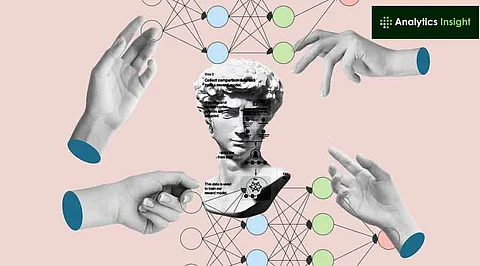

Machine learning is the study of intelligent machines that can learn from data and anticipate future outcomes. One of the most important components of machine learning is dealing with uncertainty, which is inherent in real-world data. Probabilistic models are statistical models that capture data uncertainty and forecast outcomes using probability distributions rather than exact values. Probabilistic models are frequently utilized in many machine learning applications, including classification, regression, clustering, and dimensionality reduction. This article will cover some of the most common probabilistic models used in machine learning, including Gaussian Mixture Models, Hidden Markov Models, Bayesian Networks, and Markov Random Fields.
A Gaussian Mixture Model (GMM) is a probabilistic model that assumes data is created by a combination of many Gaussian distributions, each with its mean and covariance. A GMM may be used to simulate the distribution of continuous variables like height, weight, and income. A GMM may also be used for clustering, which is the process of combining comparable data points. By fitting a GMM to the data, we can estimate the number and parameters of the clusters, as well as the likelihood that each data point belongs to each cluster. A GMM may be learned using the Expectation-Maximization (EM) technique, which iteratively changes the model parameters until convergence.
A Hidden Markov Model (HMM) is a probabilistic model that assumes the data is created by a Markov process, a stochastic process with the attribute of memorylessness, which means that the future state is determined only by the present state and not by previous states. However, the Markov process's states are hidden, which means that they cannot be directly observed. Instead, we can only see a few outputs that correspond to the concealed states. A HMM may be used to simulate the distribution of sequential data like speech, text, or DNA.
A HMM may also be used for sequence analysis, which is the process of identifying patterns or structures in sequential data. Fitting an HMM to the data allows us to estimate the number and parameters of the hidden states, as well as the transition and emission probabilities. A HMM can be trained using the Baum-Welch method, a variant of the EM algorithm, or the Viterbi algorithm, a dynamic programming approach.
A Bayesian Network (BN) is a probabilistic model that uses a directed acyclic graph to describe the conditional dependence of a collection of random variables. The graph's nodes represent random variables, while its edges reflect conditional dependencies. A BN may be used to represent the joint distribution of a set of random variables, as well as for inference and learning in the network.
A BN may also be used for causal reasoning, which is the process of determining the causal link between variables. By creating a BN from the data, we can capture the structure and semantics of the data, as well as its uncertainty and variability. A BN may be taught using a variety of approaches, including score-based, constraint-based, and hybrid methods.
A Markov Random Field (MRF) is a probabilistic model that uses an undirected graph to describe the joint distribution of a collection of random variables. The graph's nodes represent random variables, while its edges reflect pairwise dependencies. An MRF may be used to represent the distribution of complex data like photos, movies, and social networks.
An MRF may also be used for image analysis, which involves processing and comprehending pictures. By applying an MRF to the data, we can represent its geographical and temporal relationships, as well as its noise and ambiguity. An MRF may be trained using a variety of approaches, including maximum likelihood estimation, maximum a posteriori estimation, and variational inference.
Probabilistic models are an important part of machine learning because they give a rigorous and adaptable framework for dealing with uncertainty and generating predictions. Probabilistic models have a wide range of applications, including picture and audio recognition, natural language processing, and recommendation systems. In this post, we covered some of the most common probabilistic models used in machine learning, including Gaussian Mixture Models, Hidden Markov Models, Bayesian Networks, and Markov Random Fields. We hope that this essay has provided you with an overview of these models and their applications.
Join our WhatsApp Channel to get the latest news, exclusives and videos on WhatsApp
_____________
Disclaimer: Analytics Insight does not provide financial advice or guidance. Also note that the cryptocurrencies mentioned/listed on the website could potentially be scams, i.e. designed to induce you to invest financial resources that may be lost forever and not be recoverable once investments are made. You are responsible for conducting your own research (DYOR) before making any investments. Read more here.
